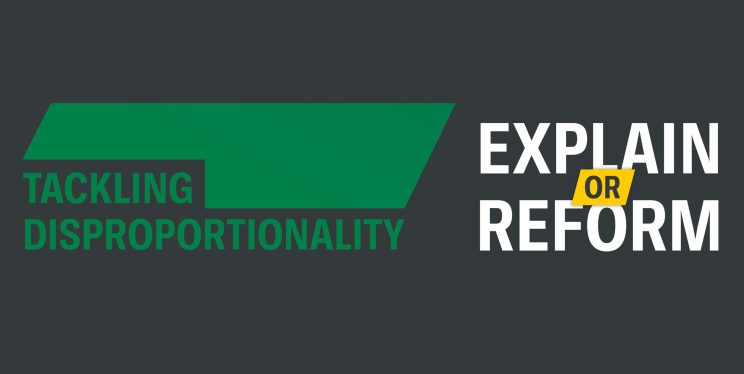Overrepresentation of black children in youth justice system focus of Independent Scrutiny Board for tackling race disproportionality

Tracy Warburton, Operations Manager at South Gloucestershire Youth Offending Team is the lead for the work to tackle disproportionality in the youth justice system. Tracy shared national Youth Justice Board statistics (2023-24) with the Tackling Disproportionality Independent Scrutiny Board (ISB) recently at their quarterly meeting, highlighting racial disparities in the youth justice system.
Peninah Achieng-Kindberg, Chair of the ISB, emphasised the importance of continued scrutiny, “We must make sure that these disparities are not just acknowledged, but actively addressed through radical systemic change. This will be evidenced by the data, once the interventions are embedded and monitoring becomes part of business as usual to ensure the changes are sustained.”
The presentation showed there are high levels of race disproportionality in several areas including:
- the numbers of Black children being stopped and searched
- the number of first-time entrants to the justice system being from a Black background or heritage
- the number of children being cautioned or sentenced from a Black background or heritage
The biggest area for disproportionality is found in the numbers of children in custody, with 24 per cent of children in custody nationally being from a Black background or heritage in the 10 to 17 population.
Tracy presented an update on ongoing efforts to address these disparities across Avon and Somerset, outlining the variety of work being done. Tracy noted that one area requiring additional support is education, particularly in ensuring that the right representatives from education services are involved across all local authorities.
During the same meeting, the Board also reviewed data from a disproportionality dashboard coordinated by Avon and Somerset Police. The dashboard highlighted disparities in the data around school exclusions as well as across all measured areas of the criminal justice system. The biggest disparity remains the relative number of Black individuals who are stopped and searched across Avon and Somerset, when compared to the relative number of white individuals.
Avon and Somerset Police (ASP) confirmed they are committed to tackling the disproportionality in stop and search and last year introduced a new stop and search policy, bespoke to Avon and Somerset and co-produced with local communities. All frontline officers have been trained in the new policy, which provides direction and support for them to use their powers legitimately to take items that cause harm off the streets and sets clear expectations on its use, for which communities can hold the police to account. For more information about how ASP are tackling the issues please visit their website: Race Matters | Avon and Somerset Police
One of the positive initiatives highlighted in the meeting is the Beacon Schools system in Bath and North East Somerset (B&NES), managed by the B&NES Race Equality and Hate Crime Task Force Partnership. This system aims to recognise and share good practice in relation to race equality work in schools across the area. Additionally, South Gloucestershire Council is funding a 12-month pilot for an African heritage project worker post – to offer appropriate support to young people.
Local authorities are also working together through regular multi-agency panels and meetings focused on preventing school exclusions – one of the key factors believed to contribute to disproportionality within the youth justice system.
The Independent Scrutiny Board will come back together in June, where they’ll have an input from the Crown Prosecution Service, alongside receiving their regular update on the Tackling Disproportionality programme: Tackling Disproportionality – OPCC for Avon and Somerset
